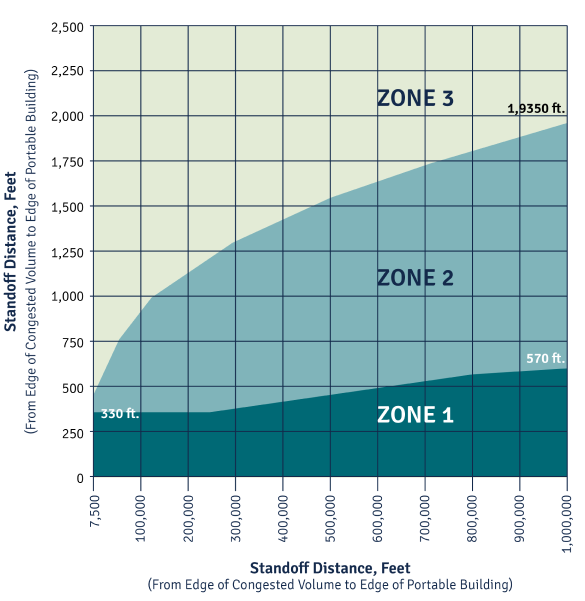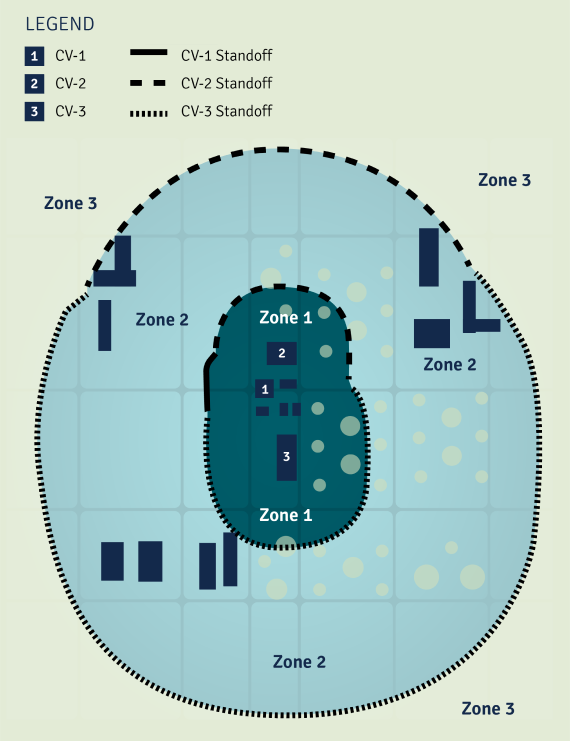API RP 752/753/756
Blast API Ratings Keep
Buildings, People and
Businesses Better
Protected
At Hunter, we take our blast API ratings personally. It’s not just about touting the fact that our blast-resistant buildings can stand up against extreme conditions. It’s about protecting lives and livelihoods in the event of an industrial accident, ballistics attack or natural disaster. All Hunter buildings are API RP 752/753/756 compliant and feature a blast rating of up to 10 PSI (690 mbar) — with higher custom ratings available upon request. In addition, our buildings can have fire ratings up to any desired duration, as well as meet strict Low Response level requirements.
Please Note:
The American Petroleum Institute (API) is the ultimate authority on blast API ratings. Refer to them directly for information related to the intricacies surrounding such safety standard, as well as recommended practices.
Blast API Basics: An Overview
API Recommended Practices 752: Building Overpressure Consequences
API RP 752 offers insight into several building types commonly used in process areas, helping companies better manage risks associated with fires, explosions and toxic material releases — and keeping on-site team members better protected. API RP 752 pertains to rigid, permanent structures housed at refineries, chemical and petrochemical plants, natural gas plants and related onshore facilities.
Hunter blast-resistant buildings are engineered to withstand up to 10 PSI (690 mbar) of overpressures, exceeding ratings associated with even reinforced concrete structures. Higher custom blast ratings are available upon request.
API Recommended Practices 753: Allowable Building Locations
API RP 753 applies specifically to portable buildings, offering guidance for improved protection against fires, explosions and hazards related to toxic release. It lays out three explosion hazard zones (also known as blast zones), dictating how they relate to structures commonly found in process areas. Such zones are defined by the congested volume and standoff distance. Here is a brief explanation of terms you should know:
- Congested Volume (CV): The volume, in cubic feet, of a collection of closely spaced objects that have the potential to increase flame speed to an extent to generate a damaging blast wave, such as an area populated with pipes, pumps, valves, vessels and other process equipment and supporting structures. (See API RP 753.1.7.1 and 1.7.2 for actual API verbiage.)
- Standoff Distance: The distance from the edge of the congested zone to the edge of the portable building.
- ERPG-3: The maximum airborne concentration below which it is believed that nearly all individuals could be exposed for up to one hour without experiencing or developing life-threatening health effects.
Toxic Release Hazards/API RP 753.5
This subsection of API RP 753 dictates that portable buildings housed in areas where a toxic release could reach ERPG-3 levels should either be designed for shelter-in-place or have an emergency response plan. (See API RP 753.5.)
Portable buildings used for shelter-in-place should have, at minimum, the following features:
- Heating, Ventilation & Air Conditioning (HVAC) Systems Capable of Rapid System Shutdown or Recirculation Mode Options (whichever is most appropriate)
Please Note: The HVAC shutdown response should be included in the emergency response plan. - Exhaust Fans & Duct Penetrations of Exterior Surfaces Equipped with a Positive Seal Against Infiltration of Outside Air
- Emergency Communications Equipment (telephones are acceptable)
- PPE to Be Used by All Occupants, as Necessary, Amid Evacuation
- Window & Door Seals
Allowable Locations & Personnel for Portable Buildings
| Light Wood Trailers | Portable Buildings (excluding light wood trailers) | Occupancy Restrictions | |
|---|---|---|---|
| Zone 1 | Not Allowed | Detailed Analysis Required | House Only Essential Personnel |
| Zone 2 | Detailed Analysis Required | Detailed Analysis Required | No Restrictions |
| Zone 3 | No Restrictions | No Restrictions | No Restrictions |
Source: API Recommended Practice 753, Table 1 (June 2007-Aug 2020)
Portable Buildings Location Guidance

Source: API Recommended Practice 753, Table 1 (June 2007-Aug 2020)
Blast Zone Visualization

Source: API Recommended Practice 753, Table 1 (June 2007-Aug 2020)
API Recommended Practices 756: Hazard Management and Process Plant Tents
Established in 2011, API RP 756 applies to blast-resistant tents housed at onshore facilities such as refineries, chemical and petrochemical plants and natural gas operations. Its goal was to establish guidelines and best practices aimed at determining how blast-resistant tents fare against a variety of blast loads, identifying potential failure modes and gathering data to better understand the strengths and vulnerabilities associated with such tents. Hunter blast-resistant tents meet API RP 756 standards, offering optimum — and portable — protection to teams carrying out work in a wide range of environments.
Blast Resistance in Buildings of All Sorts
Hunter offers blast-resistant buildings and related products that are fully customizable — and designed with safety in mind.


